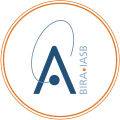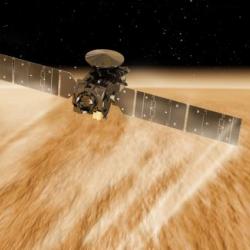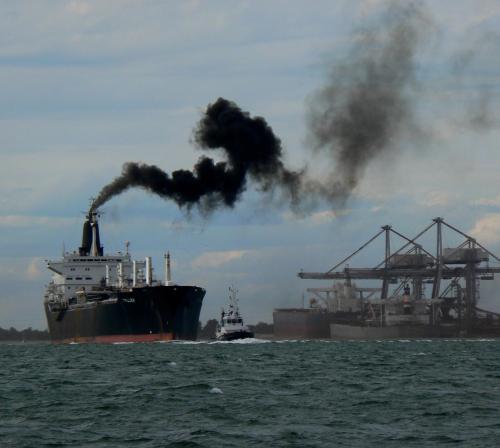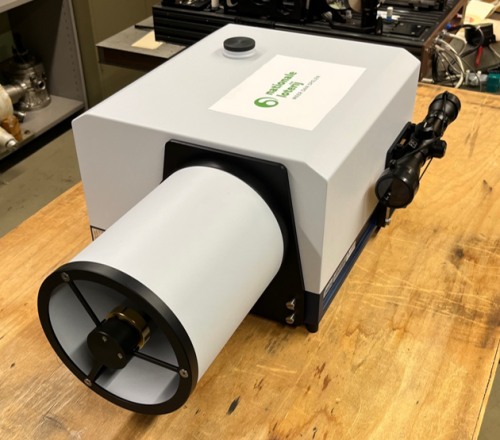The Royal Belgian Institute for Space Aeronomy is currently working on an innovative optical system that will allow to determine concentrations of pollutants (SO2, NO2 and CO2) in ship plumes in a radius of about 5km around the measuring instrument. SEMPAS (abbreviation for "Ship Emission Monitoring by Passive Absorption Spectroscopy") sensors will be placed in the wind farm in the southern part of the Belgian North Sea close to the main shipping routes and should allow to monitor ships' compliance with established limits for sulphur content in marine fuel. For nitrogen emissions, these measurements will be used to shape international regulations so that action can be taken against them too. This is essential in the fight against air pollution and climate change.

Emissions of ships at the North Sea
By burning fossil fuels, shipping is responsible for about 2.5% of global pollutant emissions, causing significant environmental damage. Ship emissions have an impact not only on the climate, but also on air quality and consequently public health in coastal areas.
Some 200,000 ships also pass through the Belgian part of the North Sea every year, emitting not only CO2, but also a number of pollutants such as sulphur, nitrogen, particulate matter and soot particles into the marine environment and the often densely populated coastal zones. These substances can cause respiratory problems, eye irritations, lung problems and even premature death.
In order to reduce air pollution from ships, the International Maritime Organisation (IMO) has also defined Low Emission Control Areas (ECAs) in Annex VI of the international MARPOL Convention, which provides for a gradual reduction of sulphur, particulate matter and nitrogen emissions from ships, where even stricter limits for air pollutants apply. These ECAs exist both for sulphur emissions - they are called SECAs (Sulphur Emission Control Areas) - and for nitrogen emissions (Nitrogen Emission Control Area, NECAs). Within the North Sea and English Channel area, there are strict standards for sulphur content in marine fuel. These are also being developed at the international level for nitrogen emissions from ship engines.
Belgian programme for aerial observations over the North Sea
Although the main shipping routes are clearly visible in global satellite nitrogen measurements, the spatial resolution is not sufficient to distinguish nitrogen emissions from individual ships in the North Sea. Moreover, sulphur dioxide emissions from sea vessels cannot be detected from space.
Since 2015 (for sulphur) and 2021 (for nitrogen), compliance with these guidelines has been monitored with a sniffer sensor on board a Belgian coastguard aircraft, led by the SURV team of the Royal Belgian Institute of Natural Sciences (RBINS). This aircraft flies through the emission plume of ships at sea to take in situ measurements. From those measurements, the sensor allows the sulphur content in the fuel to be deduced and the nitrogen oxide content of the emissions to be measured. It is an important tool in the fight against air pollution.
Now, the Royal Belgian Institute for Space Aeronomy (BIRA-IASB) has more than 20 years of experience in remote sensing of the atmosphere, both in the UV-visible and infrared spectrum, and it has been contributing for decades to international measurement networks and infrastructures such as NDACC and more recently, ACTRIS. So soon the idea grew to develop a system complementary to air measurements by using remote sensing to detect the sulphur, nitrogen and CO2 emitted in ship plumes. These measurements could assist air measurements to monitor specific ships that appear to exceed limits.
The SEMPAS instrument
BIRA-IASB is currently working on an innovative system to measure ship emissions on behalf of the Minister for the North Sea, Vincent Van Quickenborne. The SEMPAS instrument is based on a remote sensing technique by analysing solar and thermal radiation that has passed through a ship plume. Based on the absorption of light rays at specific wavelengths by the pollutants in the plume, their concentrations can be determined in a 5km radius around the instrument.
SEMPAS consists of a combination of two spectrometers. One channel is optimised for measuring sulphur and nitrogen in the UV-visible region of sunlight, while the other channel measures a spectrum in the thermal infrared for the detection of sulphur and CO2. Both telescopes will be driven by a common system for the measurements.
The telescopes will be mounted on the latest-generation compact solar tracker, developed by BIRA-IASB, for active ship tracking. A germanium input window should protect the telescope of the infrared channel from the splashing sea, moisture and salt.
Test campaigns prepare the instrument for final commissioning
Currently, the test phase is in full swing. Test measurements of static industrial chimneys in the port of Antwerp in the period January to May 2023 allowed BIRA-IASB to get to know the instrument, optimise the measurement parameters and align the telescope. The spectral characteristics of sulphur and nitrogen were evident in the measurements. First tests were also undertaken to measure emissions from passing ships near Cadzand using the infrared component of SEMPAS.
The campaigns yielded a large amount of measurements that can now be used to optimise the algorithms needed to determine pollutant concentration profiles from the raw data. The SEMPAS team at BIRA-IASB is also working on the algorithms to allow tracking of ships.
In the meantime, the design of the instrument is being optimised so that the housing can be built in such a way that it can withstand the natural elements at sea.

Installation early 2024
Today, Minister Van Quickenborne visited BIRA-IASB where preparations for the SEMPAS instrument are in full swing. It should be installed in a wind farm in early 2024 to monitor nearby shipping lanes in the Belgian North Sea on a permanent basis from then on. The instrument will be able to monitor emissions from about 30 cargo ships per day. The observations will be entered into an international database called Thetis-EU and will complement the surveillance flights carried out by RBINS' sniffer aircraft.
Vincent Van Quickenborne, Minister of the North Sea:
A new climate agreement was recently concluded within the IMO to have the shipping industry move to net zero greenhouse gas emissions by 2050. With the sniffer plane, our country today already checks whether a lot of the 200,000 ships that pass through our waters every year do not emit too much sulphur or nitrogen. To do this, they fly through the emission plume of ships. This makes us unique in the world, but far from being able to check all ships with this. That is why we want to keep innovating and developing new techniques. With this sensor, we will soon be able to do 24-7 checks on ships sailing to our ports. Early 2024, we want to place a first test project on the Mermaid wind farm. Here, our country once again shows that we have innovative companies and excellent scientists in Belgium, taking a leading role in the fight against climate change.
BIRA is developing the SEMPAS instrument in close cooperation with DG Shipping and the Royal Belgian Institute of Natural Sciences, with funding from the environmental compensation fund of DG Environment and the National Lottery.



